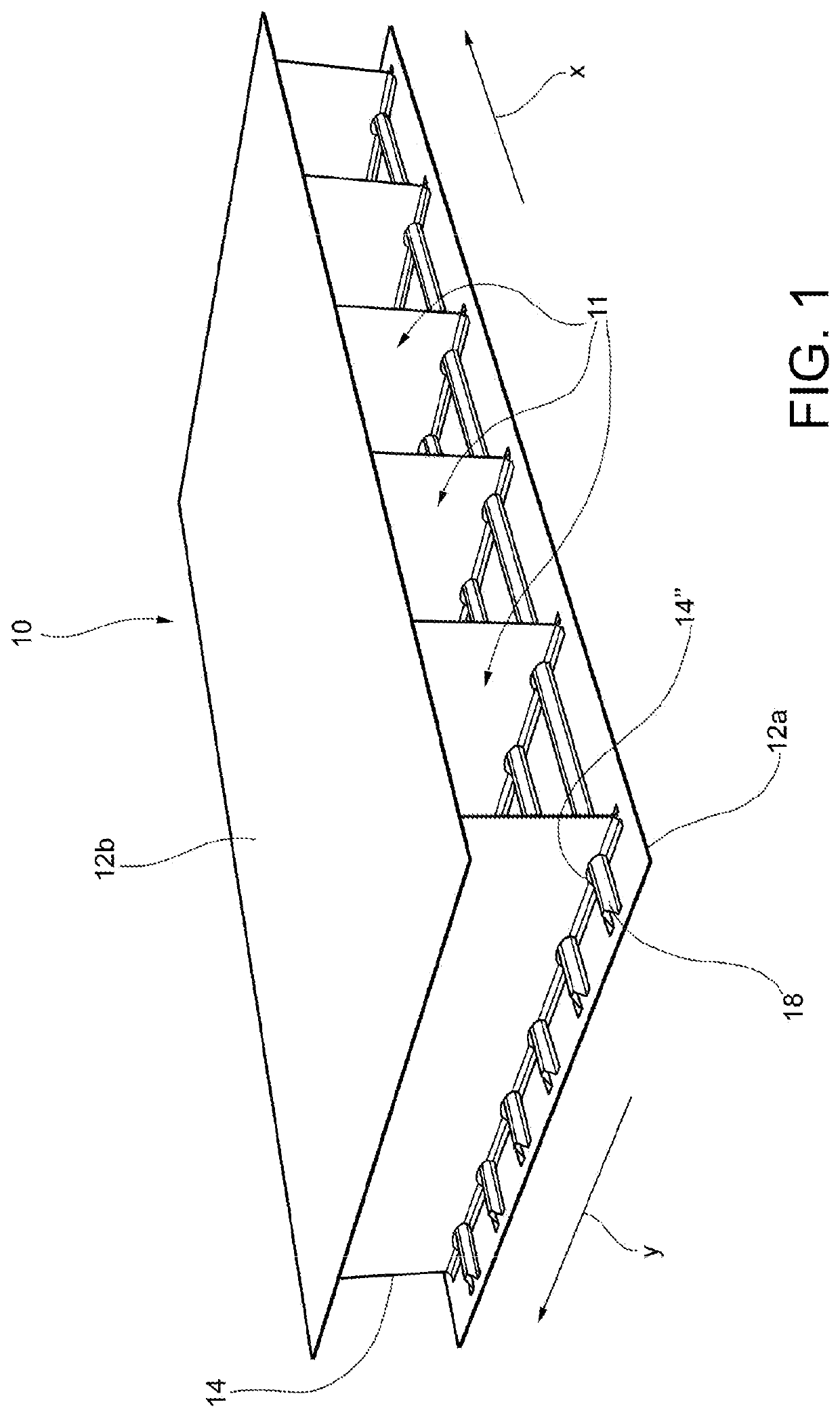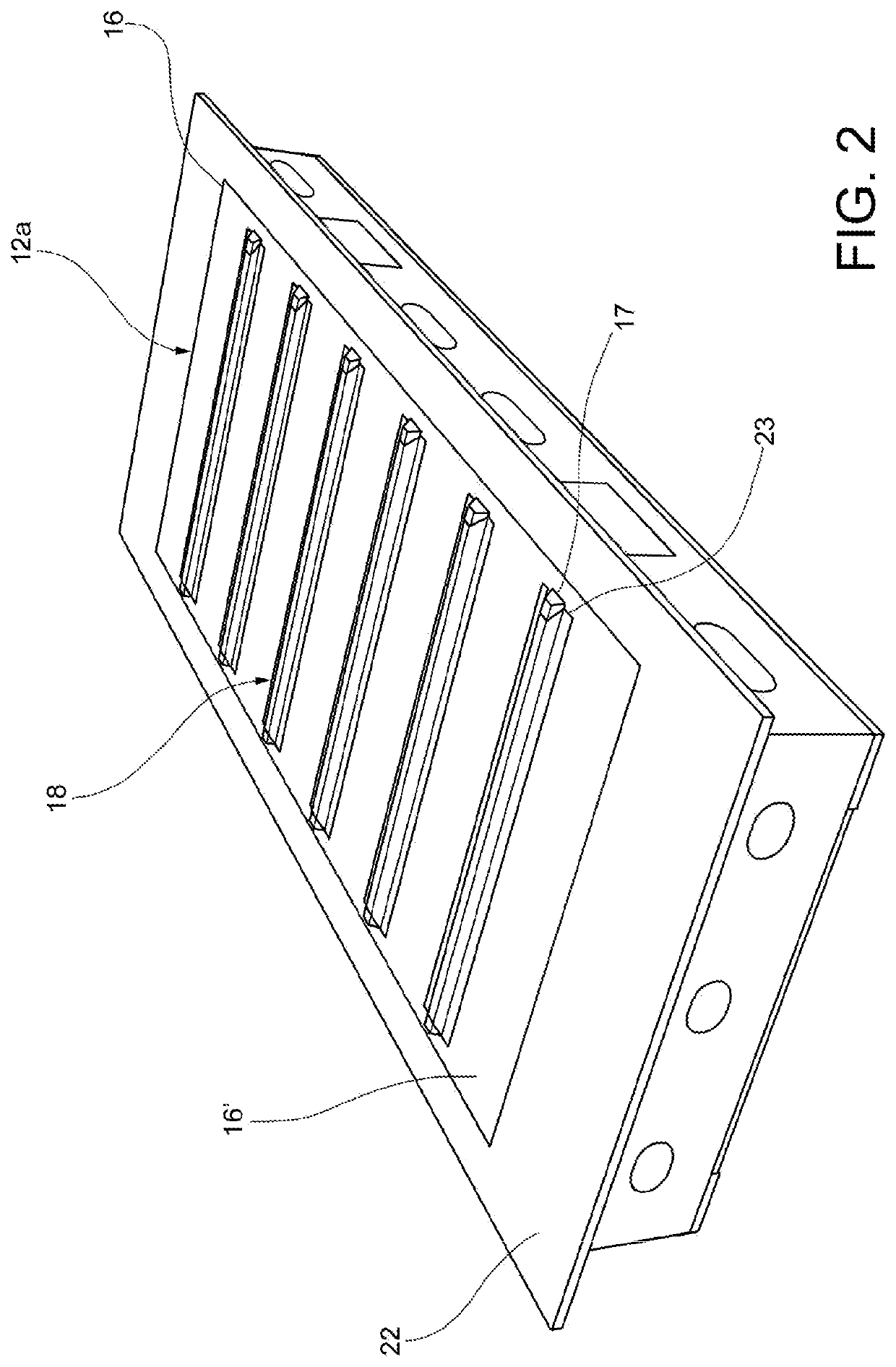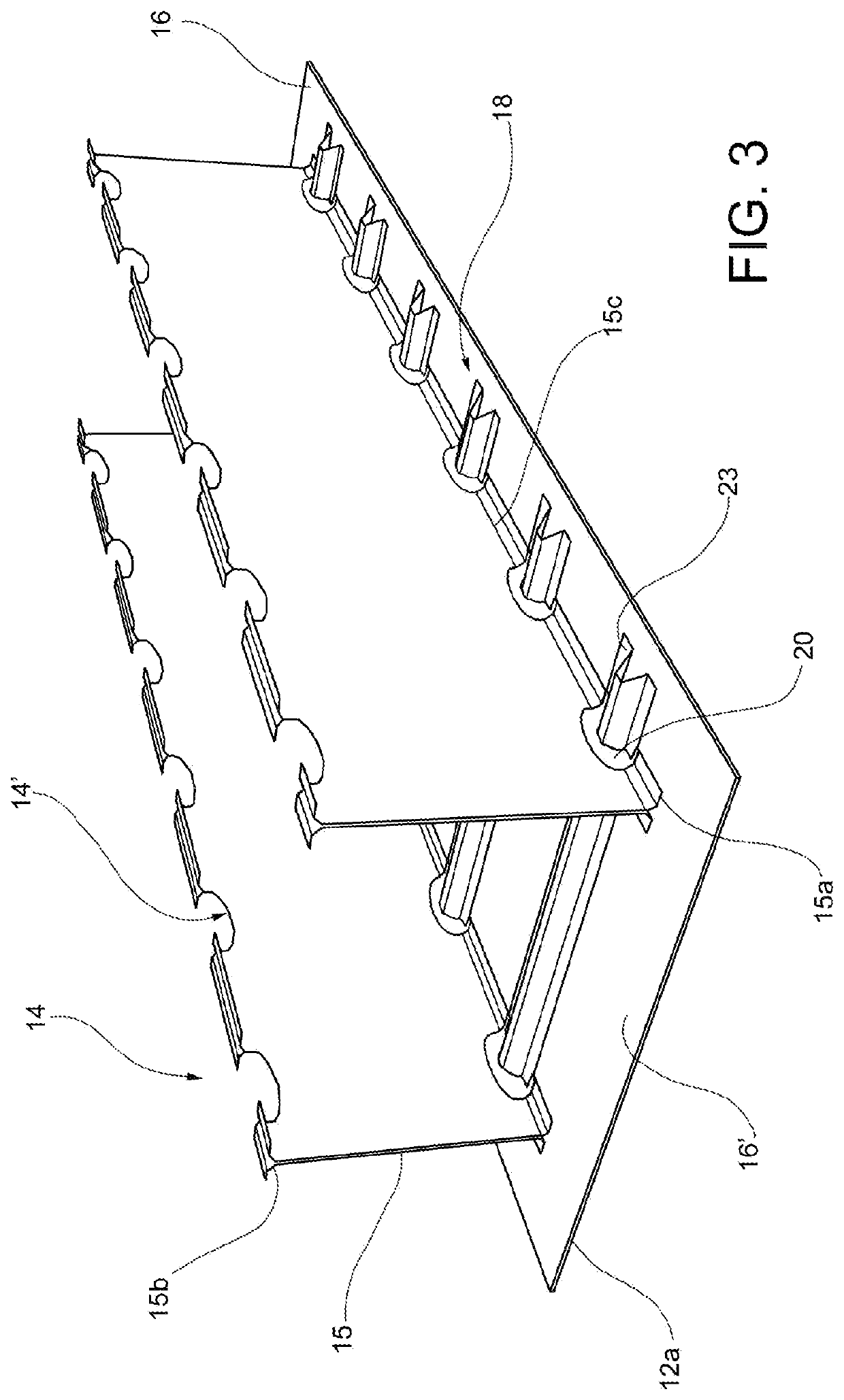Method for manufacturing a multi-ribbed wing-box of composite material with integrated stiffened panels and communicating bays
a composite material and multi-ribbed technology, applied in the direction of transportation and packaging, other domestic articles, and spars/stringers, etc., can solve the problems of production cost, operating cost, weight of the structure,
- Summary
- Abstract
- Description
- Claims
- Application Information
AI Technical Summary
Benefits of technology
Problems solved by technology
Method used
Image
Examples
Embodiment Construction
[0021]In the present context, the term ‘longitudinal’ indicates a direction substantially coincident or parallel with that of the main extension of the wing or of the empennage, while the term ‘transverse’ indicates a direction substantially perpendicular thereto, identifiable, in general, with a direction substantially coincident or parallel with that of a wing or empennage profile.
[0022]With reference to the Figures, a wing-box for aircraft as a whole is indicated with 10.
[0023]The wing-box 10 comprises a first panel 12a and a plurality of ribs 14 that separate different bays 11 from each other. The wing-box may be completed with a second panel 12b, placed on top of the bays 11 to close them, and that may be mechanically assembled in a known-per-se manner at the end of the process, or be connected by means of a curing process or of a “co-bonding” process by means of a supplementary adhesive ply.
[0024]The first panel 12a, the second panel 12b and the ribs 14 are made of composite m...
PUM
| Property | Measurement | Unit |
|---|---|---|
| pressure | aaaaa | aaaaa |
| temperature | aaaaa | aaaaa |
| density | aaaaa | aaaaa |
Abstract
Description
Claims
Application Information
 Login to View More
Login to View More - R&D
- Intellectual Property
- Life Sciences
- Materials
- Tech Scout
- Unparalleled Data Quality
- Higher Quality Content
- 60% Fewer Hallucinations
Browse by: Latest US Patents, China's latest patents, Technical Efficacy Thesaurus, Application Domain, Technology Topic, Popular Technical Reports.
© 2025 PatSnap. All rights reserved.Legal|Privacy policy|Modern Slavery Act Transparency Statement|Sitemap|About US| Contact US: help@patsnap.com



